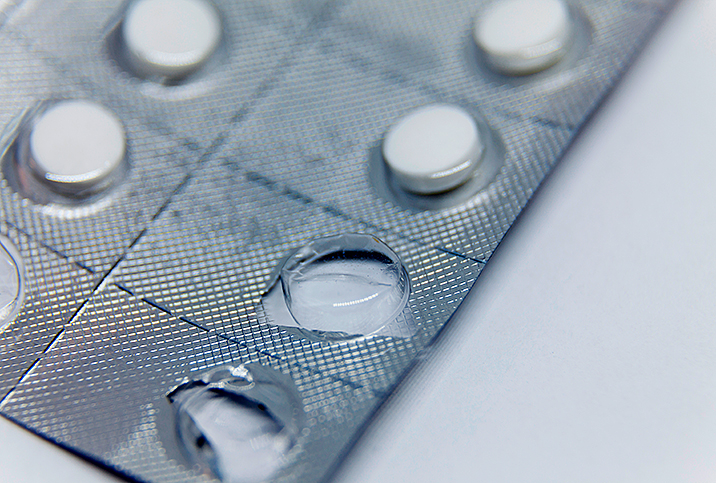Research Suggests TENS Device Reduces Pain After Medication Abortion

An unexpected or unwanted pregnancy can drastically alter the course of your life in ways you may be unprepared for.
Fortunately, for most women, it's not a responsibility they have to take on until they feel the time is right, and we have medical options to terminate unwanted pregnancies in safe, sanitary ways. And, while the physical pain associated with undergoing an abortion is usually not excessive, there are plenty of treatment options available.
Generally, two types of abortion are available to women who choose to terminate a pregnancy: an in-clinic abortion and the abortion pill.
In-clinic abortions are simple medical procedures in which clinicians use suction techniques to extract the pregnancy from the uterus safely. These come in a few different forms, the most popular of which is called a "suction abortion" and is employed 14 to 16 weeks after a woman's last period. After that time period, clinicians will likely perform a dilation and evacuation. This process also uses suction, but clinicians employ surgical tools and techniques to aid the suction process. It's typical for women to experience some pain and excessive bleeding after these surgeries.
The abortion pill is a slightly inaccurate term as it's actually two pills that terminate the pregnancy: mifepristone and misoprostol. Women first take mifepristone to impair the continued growth of the uterine lining.
"By lowering levels of the hormone progesterone through mifepristone, the uterine lining can start to shed more readily, thereby preventing any continued growth of the pregnancy," said Monica Grover, D.O., a New York–based gynecologist. "Misoprostol is given either subsequently right after mifepristone or within 48 hours of it, and its role is to induce uterine contractions to help evacuate the uterus."
The side effects of a medication abortion
There are several reasons women might opt for a medication abortion over surgery, the first being that they might simply be more comfortable taking a pill at home and letting it go to work. Grover cited another reason may be that because medication abortions closely resemble miscarriages, some women might liken them to being more natural.
Either way, opting for medication doesn't stop the side effects from the process. "Women will experience pelvic cramping and vaginal bleeding similar to a heavy menstrual period during this time," Grover said.
Other side effects may include tiredness, mild headache and tender breasts—but all these symptoms should lighten up over the subsequent few days, according to Planned Parenthood.
"The uterus is a big muscle whose job is to push out a baby or the unused lining during menses," said Betsy Greenleaf, D.O., a urogynecologist at Greenleaf Health and Wellness in Howell, New Jersey. "The uterus does so by contracting, often felt as cramps or labor pains. This squeezing expulsive action can make a [medication] abortion very uncomfortable."
Managing the pain
Many women use over-the-counter medications, such as ibuprofen, in combination with heating pads and similar pain soothers to combat the pain from the abortion, but these often only reduce the pain by a marginal amount. Fortunately, recent clinical trials may have found a more effective solution.
Researchers discovered that using a device for transcutaneous electrical nerve stimulation (TENS) reduced maximum pain scores in women recovering from medication abortions within eight hours of taking misoprostol. Despite its complex nomenclature, TENS is a relatively simple therapy that uses low voltage electrical currents to reduce pain through electric nodes placed on the pained area of the body.
"TENS has been used for a number of treatments, from orthopedic back pain to pain management of labor and delivery," Greenleaf said. If you've ever visited a chiropractor, chances are you've seen or experienced TENS therapy—it's a common pain relief method. At most, Greenleaf said, it feels "like a buzzing sensation on the skin."
Despite its complex nomenclature, TENS is a relatively simple therapy
Generally speaking, there are two theories as to how exactly TENS reduces pain. One theory suggests that the electric pulses from the device stimulate nerve cells that block pain signal transmissions. The other theory is that the electric currents stimulate endorphins in the cells. Endorphins are natural painkillers within the body, and when the level is raised by the currents, it blocks our perception of pain.
Regardless of which theory is accurate, TENS devices are used to treat a variety of conditions, including osteoarthritis, fibromyalgia, tendinitis, bursitis, back pain, pelvic pain and diabetic neuropathy, with success in reducing pain in each instance. Research shows TENS can also be useful in alleviating period pain.
These aren't devices reserved for medical professionals, either. A wide selection of affordable personal TENS devices are available online, many of which are portable and battery-operated. In research trials, scientists used an 11-point scale as a measure of a patient's pain. While actively using a TENS device, they found that patients reported a two-point reduction in pain.
While this method doesn't entirely eliminate pain, a two-point reduction is still a significant difference. When paired with pain relievers and other pain-relief techniques, this has the potential to make the abortion process much more tolerable.
"TENS offers natural pain control without using additional medication or worrying about chemical interactions and side effects," Greenleaf said. "This is already a stressful time for a woman. TENS provides an option for comfort with the confidence of few risks."
Abortion is a medical procedure that is currently illegal or restricted in some portions of the United States. For more information about the legality of abortion in your area, please consult a local healthcare provider.


















